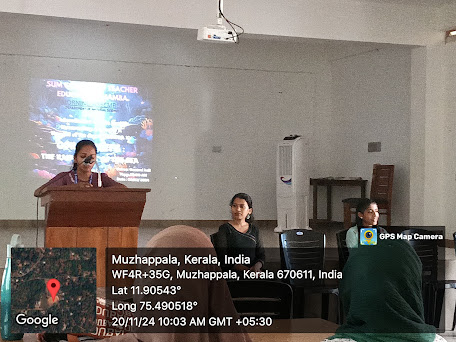The Extinction of Species: A Global Crisis
The Extinction of Species: A Global Crisis
Presented by: Ameya. C (Department of Natural Science)
The extinction of species is one of the most pressing environmental issues of our time. This phenomenon, where entire species of plants, animals, and other organisms cease to exist, has been occurring for millions of years as a natural part of Earth's history. However, the current rate of extinction is alarmingly high, primarily due to human activities, leading to what many scientists call the sixth mass extinction.
One of the
primary drivers of extinction is habitat destruction caused by the over
exploitation by humans. For example,
deforestation in the Amazon rainforest, often referred to as the "lungs of
the Earth," is not only contributing to climate change but is also pushing
many species to the brink of extinction.
Another major factor is climate change. As
global temperatures rise due to the increase in greenhouse gases, the habitats
of many species are being altered. Polar bears, for instance, rely on sea ice
for hunting and breeding, but as the ice melts, their ability to survive
diminishes. Similarly, coral reefs, which is a marine ecosystem and vital to
marine life, are dying off due to warming of water, leading to the loss of
biodiversity. Pollution is another contributing factor. Marine life, in particular, is severely
affected by plastic pollution, with countless animals ingesting or becoming
entangled in plastic waste.
The loss of
species has far-reaching consequences, not only for the natural world but also
for humanity. Biodiversity, the variety of life on Earth, is essential for
ecosystem stability and the services they provide. These services include clean
air and water, pollination of crops, and the decomposition of waste. The
extinction of species disrupts these ecosystems, leading to a decline in these
vital services, which directly affects human well-being. Furthermore, the
extinction of species can lead to the loss of potential medical discoveries.
Many plants and animals have properties that can be used to develop new
medicines. The destruction of rainforests and other biodiverse habitats means
that we may be losing unknown cures for diseases.
Public awareness
and education are crucial in the fight against extinction. By understanding the
importance of biodiversity and the impact of our actions, individuals can make
more environmentally conscious choices. Supporting sustainable practices, reducing
waste, and advocating for stronger environmental policies are ways in which
everyone can contribute to the preservation of species.
The extinction
of species is a crisis that demands immediate attention. The loss of
biodiversity not only threatens the natural world but also poses significant
risks to human life. While the challenges are immense, there is still hope if
we act swiftly and decisively. By protecting habitats, combating climate
change, and curbing overexploitation and pollution, we can work towards a
future where species thrive, and the intricate web of life on Earth remains
intact.





Comments
Post a Comment